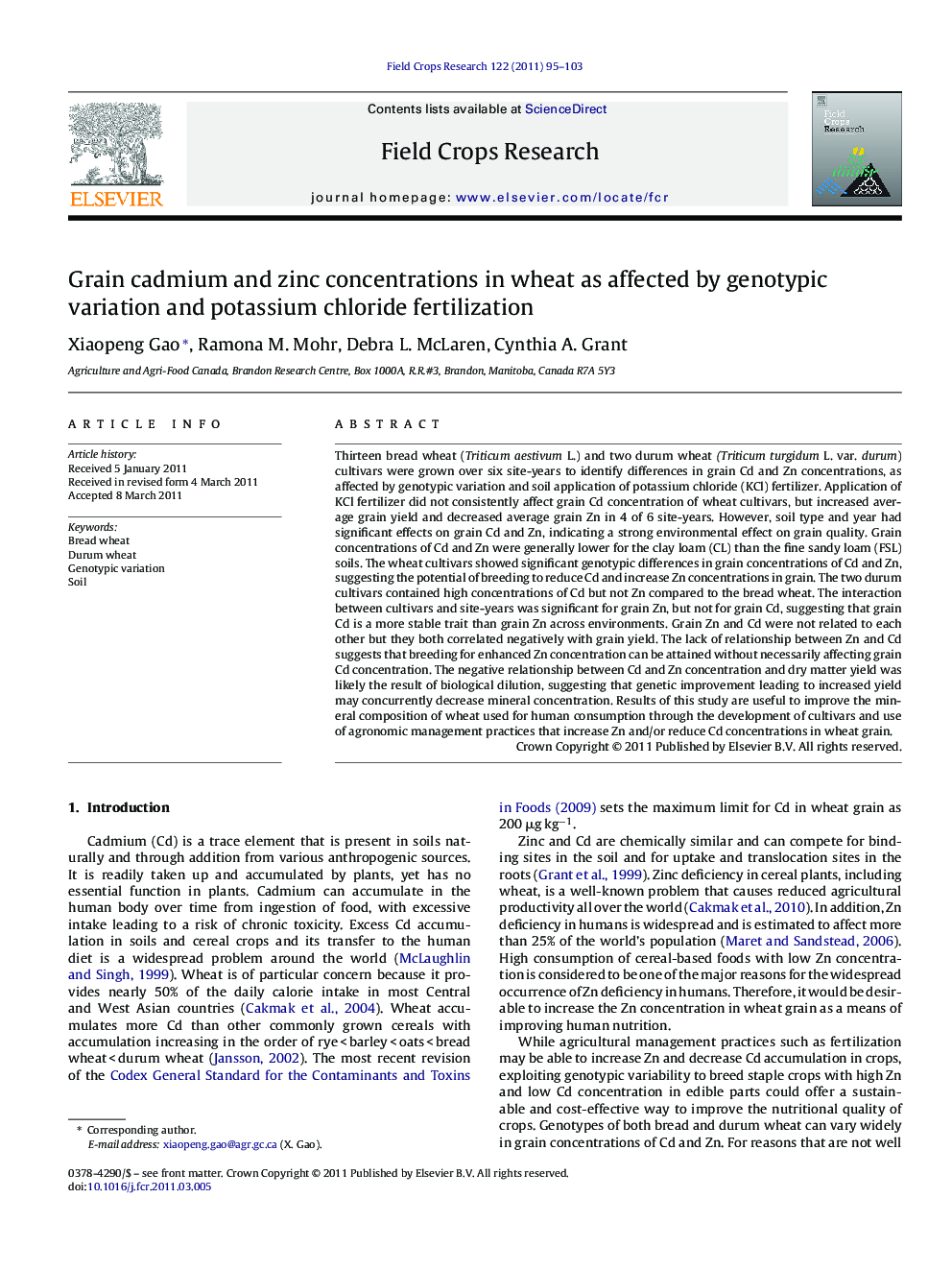| کد مقاله | کد نشریه | سال انتشار | مقاله انگلیسی | نسخه تمام متن |
|---|---|---|---|---|
| 4510621 | 1321866 | 2011 | 9 صفحه PDF | دانلود رایگان |

Thirteen bread wheat (Triticum aestivum L.) and two durum wheat (Triticum turgidum L. var. durum) cultivars were grown over six site-years to identify differences in grain Cd and Zn concentrations, as affected by genotypic variation and soil application of potassium chloride (KCl) fertilizer. Application of KCl fertilizer did not consistently affect grain Cd concentration of wheat cultivars, but increased average grain yield and decreased average grain Zn in 4 of 6 site-years. However, soil type and year had significant effects on grain Cd and Zn, indicating a strong environmental effect on grain quality. Grain concentrations of Cd and Zn were generally lower for the clay loam (CL) than the fine sandy loam (FSL) soils. The wheat cultivars showed significant genotypic differences in grain concentrations of Cd and Zn, suggesting the potential of breeding to reduce Cd and increase Zn concentrations in grain. The two durum cultivars contained high concentrations of Cd but not Zn compared to the bread wheat. The interaction between cultivars and site-years was significant for grain Zn, but not for grain Cd, suggesting that grain Cd is a more stable trait than grain Zn across environments. Grain Zn and Cd were not related to each other but they both correlated negatively with grain yield. The lack of relationship between Zn and Cd suggests that breeding for enhanced Zn concentration can be attained without necessarily affecting grain Cd concentration. The negative relationship between Cd and Zn concentration and dry matter yield was likely the result of biological dilution, suggesting that genetic improvement leading to increased yield may concurrently decrease mineral concentration. Results of this study are useful to improve the mineral composition of wheat used for human consumption through the development of cultivars and use of agronomic management practices that increase Zn and/or reduce Cd concentrations in wheat grain.
► It is desirable to produce crop grain with less cadmium and adequate zinc.
► We examined the interactive effect of genotype and KCl fertilization under varying environments.
► There were substantial variation in grain cadmium and zinc.
► Application of KCl fertilizer did not show consistent influence.
► Results are useful for agronomic management practices and breeding strategies.
Journal: Field Crops Research - Volume 122, Issue 2, 18 May 2011, Pages 95–103